Din Lligwy: Prehistoric Celtic Settlement Of Anglesey, Wales
A. Sutherland - AncientPages.com - The prehistoric ruins of the Din Lligwy settlement have a long history spanning three eras.
House foundations at Din Lligwy hut circle, Anglesey, August 2, 2004. Image credit: Velela - CC0 1.0 -Public Domain
It is a fascinating place on the eastern coast of Anglesey, Wales, United Kingdom, which has experienced more than 5000 years of human activity.
The Din Lligwy Ancient Village (also known as the Din Lligwy Hut Group) represents a set of structures, including a Neolithic burial chamber, an Iron Age village, and an old, long-abandoned church. It was built by the native population of Anglesey during the latter part of the Roman occupation of Wales. But the origin of the settlement may well go back to the Iron Age.
Din Lligwy Burial Chamber consists of a circle of eight upright stones of differing shapes, all supporting a massive capstone, 5.9m by 5.2m and 1.1m thick. The enormous capstone weighs approximately 25 tons, while the chamber has a height of about 2 meters. An earthen mound would have covered initially Lligwy. If such a cairn once covered this chambered tomb, no trace remains.
This ancient chamber, dated to c. 3000 BC, was excavated by archaeologists in 1908/9. They discovered the bones of men, women, and children, animal bones, flint implements, shells, pottery, and a bone pin.
Lligwy Burial Chamber. Image credit: Kate Heath - Flickr - CC BY 2.0
It is worth noting that even earlier (1905-07), excavations revealed hundreds of Roman potsherds dated back to the 3rd and 4th centuries AD, many repaired with iron clamps, pottery, and coins.
People focused on ironworking, smithing, and probably smelting, supported by smelting hearths and iron slag in some of the building remains. The settlement includes a series of well-preserved stone huts within a stone-walled enclosure.
Two rectangular huts contained six smelting hearths. One well-preserved Din Lligwy hut circle - probably dated from the 2nd to the 4th centuries AD – was occupied up to the Romano-British time.
Credit: Adobe Stock - Massimo Todaro
Two different settlements once existed in the area. The grooved ware dates to the Neolithic period and represents the British Neolithic pottery style.
Another one is beaker ware from the early Bronze Age. However, the presence of grooved ware and beaker pottery would suggest that this tomb was used during the Neolithic and later, during the early Bronze Age.
At first, Iron Age Britons probably lived in the area. Excavations on the site revealed that the round structures were likely houses, and the rectangular ones were barns or workshops. Later, these people were influenced mainly by the lifestyle of the invading Romans. The settlement is one of several that existed in the Lligwy Valley.
It is believed that two rectangular huts contained six smelting hearths. At first, Iron Age Britons probably lived in roundhouses; later, these people were influenced mainly by the lifestyle of the invading Romans. The settlement is one of several in the Lligwy Valley.
Times when the Vikings invaded North Wales were troublesome.
Historical records show that a series of terrifying attacks by Viking invaders on the coasts of Britain, France, and Ireland occurred in the last decade of the 8th century.
However, archaeological evidence shows these invaders may not have been as devastating as records claim.
The first recorded raid on Wales occurred in 852, and later, further attacks by Vikings on Anglesey and Gwynedd from 854 onwards. Rhodri Mawr, the ruler of Gwynedd (844-78), led resistance to these early destructive attacks, killing the Danish leader Gorm in 855.
Rhodri Mawr, King of Wales/King of the Britons. Credit: Public Domain
In the meantime, Vikings - after being driven out of Dublin - came to Anglesey in 903. Irish and Welsh records said they failed to establish in Wales, so they decided to sail to Chester. But again, in 918, Anglesey was ravaged by Vikings.
Frequent attacks occurred on the island during the second half of the 10th century; Olaf of Dublin built a castle known as 'Olaf's Castle' or 'Castell Bon y Dom' in the year 1000.
This one-sided historical record of Vikings terrorizing the land has now been transformed by archaeology. Viking contact was sometimes hostile and brutal; however, in some areas, the Vikings rapidly settled as peaceful farmers. Archaeological excavations have provided evidence of these people as colonizers, skilled craftsmen, and merchants.
The nature of Viking settlement in Wales remains one of the mysteries of early medieval archaeology, none more so than on Anglesey. Vikings are firmly and undoubtedly historically associated with the Isle of Man, Dublin, Chester, and the Wirral. Geographically, these places are also linked with the waters of Anglesey. Therefore, the activities in this area left their mark on Anglesey's history.
Written by – A. Sutherland AncientPages.com Senior Staff Writer
Updated on Mar 1, 2024
Copyright © AncientPages.com All rights reserved. This material may not be published, broadcast, rewritten or redistributed in whole or part without the express written permission of AncientPages.com
Expand for referencesReferences:
More From Ancient Pages
-
 Zuni Indians Bravely Fought For Their Ancient Culture, Traditions And Respect For Their Ancestors
Featured Stories | Mar 14, 2018
Zuni Indians Bravely Fought For Their Ancient Culture, Traditions And Respect For Their Ancestors
Featured Stories | Mar 14, 2018 -
 On This Day In History: Great English Dramatist And Poet William Shakespeare, Was Probably Born – On Apr 23, 1564
News | Apr 23, 2016
On This Day In History: Great English Dramatist And Poet William Shakespeare, Was Probably Born – On Apr 23, 1564
News | Apr 23, 2016 -
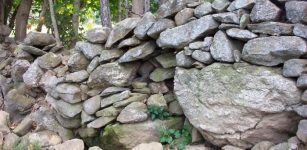 New England’s Abandoned Stone Walls Deserve A Science Of Their Own
Featured Stories | Jan 5, 2024
New England’s Abandoned Stone Walls Deserve A Science Of Their Own
Featured Stories | Jan 5, 2024 -
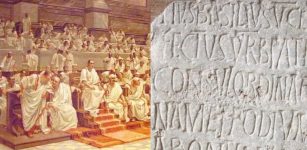 Acta Diurna: World’s First Newspaper Appeared In 131 B.C
Ancient History Facts | Jun 10, 2019
Acta Diurna: World’s First Newspaper Appeared In 131 B.C
Ancient History Facts | Jun 10, 2019 -
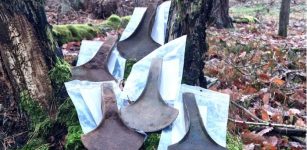 Five Rare Bronze Age Axe Heads Found In Polish Forest
Archaeology | Dec 8, 2023
Five Rare Bronze Age Axe Heads Found In Polish Forest
Archaeology | Dec 8, 2023 -
 Mysterious Disappearance Of Explorer Peng Jiamu In Lop Nur – The Wandering Lake
Featured Stories | Dec 20, 2018
Mysterious Disappearance Of Explorer Peng Jiamu In Lop Nur – The Wandering Lake
Featured Stories | Dec 20, 2018 -
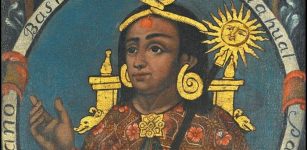 Story Of Atahualpa: The Last Emperor Of The Inca Empire
Featured Stories | Feb 4, 2016
Story Of Atahualpa: The Last Emperor Of The Inca Empire
Featured Stories | Feb 4, 2016 -
 Tracking Prehistoric Relations With AI From The Middle Stone Age To Antiquity
Archaeology | Jul 14, 2023
Tracking Prehistoric Relations With AI From The Middle Stone Age To Antiquity
Archaeology | Jul 14, 2023 -
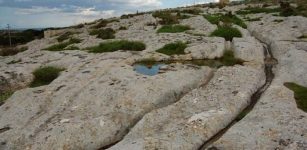 Unknown Highly Advanced Civilization Created Malta’s Cart Ruts With Sophisticated Machinery
Ancient Technology | Apr 26, 2014
Unknown Highly Advanced Civilization Created Malta’s Cart Ruts With Sophisticated Machinery
Ancient Technology | Apr 26, 2014 -
 Is A Viking Ship Hidden In The Colorado Desert?
Featured Stories | Jan 8, 2018
Is A Viking Ship Hidden In The Colorado Desert?
Featured Stories | Jan 8, 2018 -
 Celtiberians: Intriguing Martial Culture And Their Skilled Warrior Infantry
Civilizations | Jul 13, 2024
Celtiberians: Intriguing Martial Culture And Their Skilled Warrior Infantry
Civilizations | Jul 13, 2024 -
 Ancient Ruins Of Hovenweep: Impressive Puebloan Masonry
Civilizations | Mar 15, 2016
Ancient Ruins Of Hovenweep: Impressive Puebloan Masonry
Civilizations | Mar 15, 2016 -
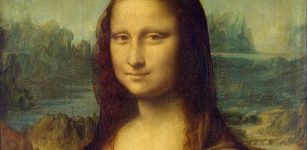 X-Rays Reveal Secret From Da Vinci’s Masterpiece Mona Lisa
News | Oct 14, 2023
X-Rays Reveal Secret From Da Vinci’s Masterpiece Mona Lisa
News | Oct 14, 2023 -
 Scientists Use Ancient DNA To Explore Early European Adaptation
DNA | Nov 27, 2024
Scientists Use Ancient DNA To Explore Early European Adaptation
DNA | Nov 27, 2024 -
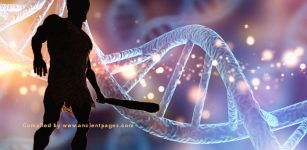 Your Neanderthal Genes May Prevent You From Metabolizing Drugs Efficiently
Archaeology | Jul 25, 2022
Your Neanderthal Genes May Prevent You From Metabolizing Drugs Efficiently
Archaeology | Jul 25, 2022 -
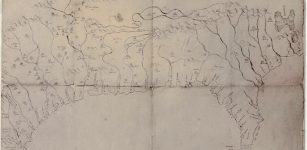 Cartography Shows That The Isthmus Of Tehuantepec Was Used As An Inter-Oceanic Passage In The 16th Century
Archaeology | Oct 21, 2022
Cartography Shows That The Isthmus Of Tehuantepec Was Used As An Inter-Oceanic Passage In The 16th Century
Archaeology | Oct 21, 2022 -
 Magical Dinas Emrys: Legendary Battle Of The Dragons And Merlin’s Hidden Treasure
Featured Stories | Jan 15, 2025
Magical Dinas Emrys: Legendary Battle Of The Dragons And Merlin’s Hidden Treasure
Featured Stories | Jan 15, 2025 -
 Mummy Of Pharaoh Amenhotep I Digitally Unwrapped For The First Time In 3,000 Years
Archaeology | Dec 30, 2021
Mummy Of Pharaoh Amenhotep I Digitally Unwrapped For The First Time In 3,000 Years
Archaeology | Dec 30, 2021 -
 On This Day In History: Captain James Cook Discovers Hawaiian Islands – On Jan 18, 1778
News | Jan 18, 2017
On This Day In History: Captain James Cook Discovers Hawaiian Islands – On Jan 18, 1778
News | Jan 18, 2017 -
 Anglo-Saxon Watermill Discovered In Buckinghamshire, UK
Archaeology | Mar 13, 2023
Anglo-Saxon Watermill Discovered In Buckinghamshire, UK
Archaeology | Mar 13, 2023




